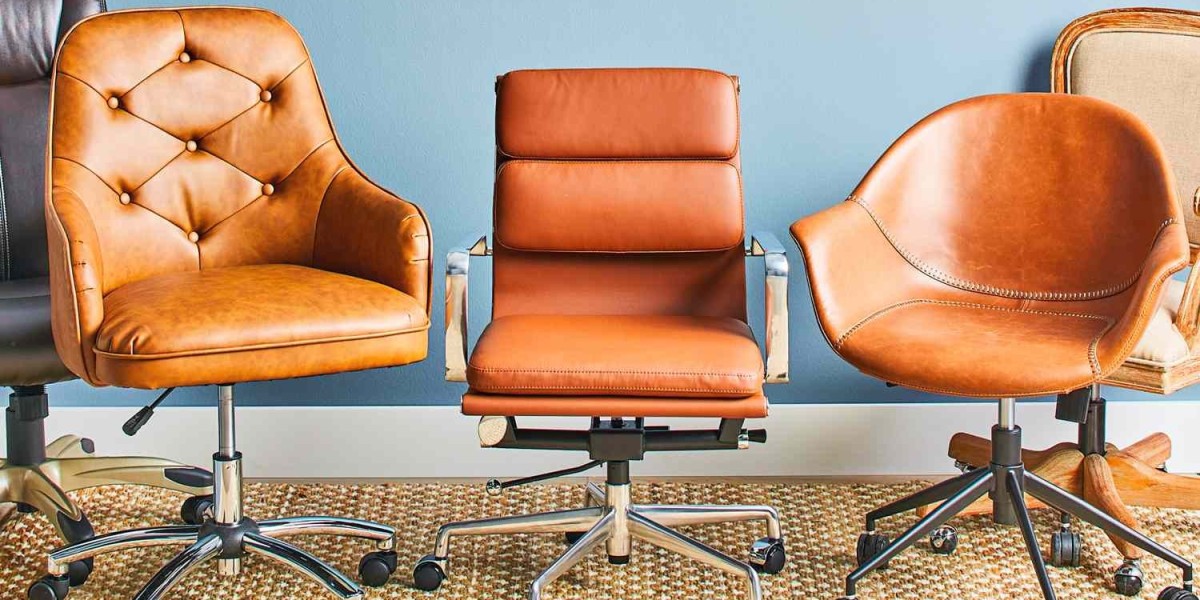Selecting the right office chair for every employee is crucial for ensuring comfort, productivity, and overall well-being in the workplace. With so many options on the market, it can be overwhelming to make the right choice. Here's a step-by-step guide on how to choose the perfect office chair for every employee, tailored to different needs and preferences.
1. Understand the Needs of Your Employees
The first step in choosing the right office chair is understanding the specific needs of your workforce. Different employees may have varying requirements based on their physical attributes, job roles, and any pre-existing health conditions.
- Job Role: Employees who spend long hours sitting, like data entry staff or call center agents, may need chairs with extra lumbar support. Creative workers or those who use multiple screens may prefer chairs with flexible movement and easy swivel capabilities.
- Physical Attributes: Consider the height, weight, and build of your staff. For example, taller employees may need chairs with higher backs and deeper seats, while shorter employees might require chairs with lower seat heights.
2. Prioritize Ergonomic Features
Ergonomic office chairs are designed to provide the best support for long-term sitting, reducing strain on the body. Key ergonomic features to look for include:
- Adjustable Seat Height: The chair should allow employees to adjust the height so their feet rest flat on the floor and their knees are at a 90-degree angle.
- Lumbar Support: Adequate lower back support is essential for preventing back pain. Chairs with adjustable lumbar support can be customized to the curvature of each employee’s spine.
- Adjustable Armrests: Armrests that can be adjusted in height and width help reduce shoulder and neck strain.
- Seat Depth Adjustment: This feature ensures that employees with different leg lengths can sit comfortably, with a gap between the edge of the seat and the back of their knees.
- Tilt Mechanism: A chair that allows employees to recline slightly and adjust the tilt tension promotes movement and relaxation during long work hours.
3. Choose the Right Material
The material of the chair impacts both comfort and durability. There are various options available:
- Mesh Back: Mesh chairs provide good airflow, making them ideal for employees who work long hours in warmer environments.
- Leather or Faux Leather: These chairs offer a sleek, professional look and are easy to clean, though they may not be as breathable as mesh.
- Fabric: Fabric chairs are soft and comfortable, and they come in a variety of colors. Ensure the fabric is durable and stain-resistant.
4. Consider Adjustable Features for Flexibility
For a chair to suit every employee, it needs to be highly adjustable. Look for chairs with multiple adjustment points so that each user can customize their chair to their specific comfort level.
- Seat Tilt: The ability to adjust the seat tilt allows users to change their posture throughout the day, relieving pressure on the lower back.
- Swivel and Casters: Swivel chairs with smooth-rolling casters are essential for ease of movement, especially for employees who need to shift between tasks or different workstations.
- Headrests: For some employees, especially those with neck issues, an adjustable headrest can provide added comfort and support.
5. Test for Comfort and Support
Before committing to a large purchase, it’s a good idea to allow employees to test different chair models. Comfort is subjective, and what works for one person may not work for another.
- Trial Periods: If possible, provide a trial period for employees to test the chairs in their workspace. This allows for real-world feedback on comfort, adjustability, and functionality.
- Feedback: Encourage employees to give feedback on the chairs they test, including what they like or dislike about the design, material, and adjustability.
6. Choose Chairs That Match the Office Environment
While functionality is the priority, the design of the chair should also align with the office’s aesthetics and culture.
- Office Aesthetics: Select chairs that complement the overall look of your office. For a modern office, sleek, minimalist chairs might work best, while more traditional settings might call for executive-style leather chairs.
- Space Considerations: If space is limited, choose chairs that are compact or have a smaller footprint. For open-plan or collaborative spaces, chairs with easy mobility and simple designs may be more appropriate.
7. Look for Quality and Durability
Office chairs are a long-term investment, so it’s important to select chairs made from durable materials and from reputable manufacturers.
- Weight Capacity: Ensure the chair has a weight capacity that can accommodate different employees. Higher weight capacities often indicate sturdier builds.
- Warranty: Look for chairs that come with a warranty, as this ensures that the manufacturer stands behind the quality of the product.
- Durability: Chairs that are used frequently should be constructed from high-quality materials that won’t wear out quickly. Pay attention to the stitching, base, and casters for signs of strength and longevity.
8. Consider Budget Without Compromising on Essential Features
While it’s tempting to choose the most affordable option, sacrificing quality and ergonomics can cost more in the long run through increased employee discomfort and reduced productivity.
- Balance Price and Features: Focus on finding a balance between cost and essential ergonomic features. Higher-quality chairs with more adjustability may be more expensive upfront, but they often last longer and provide better support.
- Bulk Discounts: If you’re purchasing chairs for a larger team, inquire about bulk purchase discounts, which can make high-quality chairs more affordable.
9. Address Special Employee Needs
Some employees may have specific needs that require specialized seating. For example:
- For Taller Employees: Chairs with higher backs and deeper seats offer better support for taller employees.
- For Shorter Employees: Chairs with lower seat heights or footrests can provide better comfort for shorter employees.
- For Employees with Back Issues: Ergonomic chairs with advanced lumbar support or memory foam cushions may be necessary for those with chronic back problems.
Conclusion
Choosing the perfect office chair for every employee involves balancing ergonomic support, adjustability, comfort, and aesthetics. By taking the time to understand the needs of your staff and focusing on features that promote health and productivity, you can select office chairs that benefit both the individual and the organization as a whole. Investing in the right office chairs can lead to happier, healthier employees and a more productive workplace.






